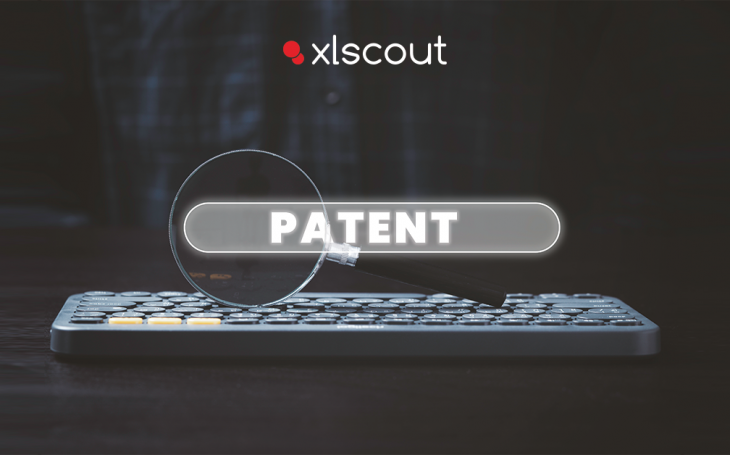
Artificial Intelligence is changing the world around you. For example, from suggesting videos on things that you might be thinking to buy/ watch to generating content for you. But can AI help with conducting your own patent search? Let us investigate.
“To pursue or not to pursue” is the question.
If you are the creative type, you must have a lot of ideas as you go about your day, as if problems are waiting for you to arrive and solve them. You are also aware of the power and dangers of ideas. Pursue the right one, and you can make a fortune; pursue the wrong one, and you will waste your time and effort.
So, it would be beneficial if you pursued the ideas that are most likely to yield high returns. But how do you know ahead of time?
There is no simple answer to this question, only a set of guidelines. One is that it is preferable to pursue novel and previously unthought ideas. This is significant because if you market your idea, you may be able to obtain a patent. If your idea is not novel, you will not have exclusive access to it and might not even be able to market it.
Many inventors do not pay enough attention to it. Or they believe that because an idea has not yet been developed into a product, there is no risk in bringing it to market. Nothing could be further from the truth. Only a small percentage of the actual ideas patented are realized in products. As a result, it is critical to conduct a prior art search before pursuing any idea to ensure that you will be able to patent it and thus have exclusive rights to market it.
Patent Search – Challenges
There are numerous free resources available for conducting your own patent search. You will have access to thousands of patents. However, sorting through that mountain of paperwork will take days. Not only that, but these search engines require you to create complex search strings. Here’s an example of a sophisticated boolean search string:
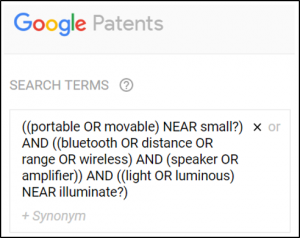
The most advanced patent search tools cater to users who know what to look for, how to look for it, and where to look for it. However, you are an inventor with no legal training. But don’t be worried. A patent search engine that comprehends natural language and makes it simple to navigate through search results exists. When AI can drive cars, it can make complex patent searches easier as well.
Conducting your own Patent Search Using XLSCOUT
The Novelty Checker from XLSCOUT makes prior art searches easier for inventors. The tool searches for similar inventions to yours to determine whether a patent is feasible.
Using AI for conducting your own patent search: A step-by-step guide to conducting an AI-based patent search with Novelty Checker is provided below:
Step 1 – Submit your Idea
Enter the Key Features of your Idea in Simple Words
Assume you created a battery-powered potato peeler. The peeler shaves potato peels smoothly and effortlessly with the press of a button.
So, how should you start your search? Begin with entering the problem you are trying to solve, then the invention title or technology domain, followed by key features or invention details of your invention in simple words. You can then either supervise the search (advanced search) or simply proceed to the search results.

Step2 – Supervise the Machine
Review the Top Results
Take a look at the results.
You may notice a variety of potato peelers with and without patents similar to yours. Our AI-based patent search tool displays the Top-20, 50, or 100 closest results along with the similarity score and feature mapping with respect to the invention. You can screen your ideas by comparing them with more than 150 million patents and 220 million+ research publications in real time.
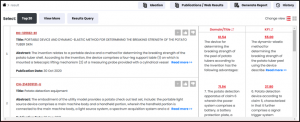
XLSCOUT has employed Generative AI in its patent search tool. Using this, XLSCOUT is assisting individuals and organizations come up with new and innovative solutions to problems. Ideacue by XLSCOUT is designed to assist inventors with idea generation. We have created an Idea Playground powered by Generative AI for inventors. It suggests machine-generated inventive concepts to inventors, which they can combine with their own ideas to improve. These ideas can be generated based on the user’s preferred technology. As an interactive dashboard, Idea Playground allows users to select inventive concepts and sub-concepts and generate AI-based ideas based on them.

Inventive concepts act like idea triggers that can be used to simulate ideation and generate new ideas. Subsequently, these can be very useful for inventors. They assist them in thinking outside the box and developing creative solutions that they would not have considered otherwise. Along with ideation, idea evaluation is also an important part of the innovation cycle. XLSCOUT also includes an Idea Dashboard. The easy-to-use dashboard helps you with idea evaluation, brainstorming, and improving idea quality. It provides numerous other insights while significantly increasing the efficiency of research and development. The dashboard assists inventors in quickly assessing the strengths and weaknesses of their ideas in a few simple steps. It gives a qualitative indication of the strength of an idea. Subsequently, using the indicator, inventors can determine whether or not their idea is ready to move forward. Or whether it requires more brainstorming or iterations.
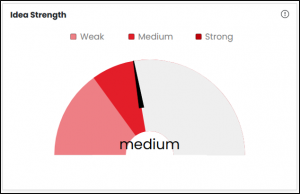
Step3 – Novelty Search Report
Get an Automated Novelty Report within 5 minutes!
If any relevant results are found, click “Generate Report.” After that, a PDF report will be emailed to you. The Novelty Checker’s Automated Novelty Reports include a list of results along with relevant text mapping with the key features of the invention for enabling quick decision-making.
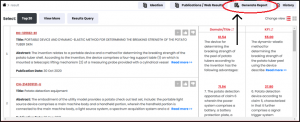
Our Methodology
XLSCOUT put the use of reinforcement learning to its AI-based Novelty Checker (patent searching tool) to get quality patent research reports in just 5 minutes. The Novelty Checker uses reinforcement learning to filter the noise from the prior art by pulling up the relevant results on top of the list. To be precise, it assists in conducting patentability search to help you ensure that your innovation is unique. By selecting a few relevant and non-relevant results, users can apply them to the result set. The system takes the user’s feedback and then learns from it. It uses conceptual searching and re-ranks the results by bringing the quality results to the top and sending the noise to the bottom.
Without reinforcement learning, users go through hundreds of results manually. By applying this process, users can skip going through the non-relevant results. Reinforcement can also be applied multiple times to a result set according to users’ different requirements/criteria. Users can then view the Top-10 or Top-20 results for each criterion to perform a prior-art analysis for idea validation. Users can quickly generate an automated novelty report by selecting these Top-10 or 20 results.

